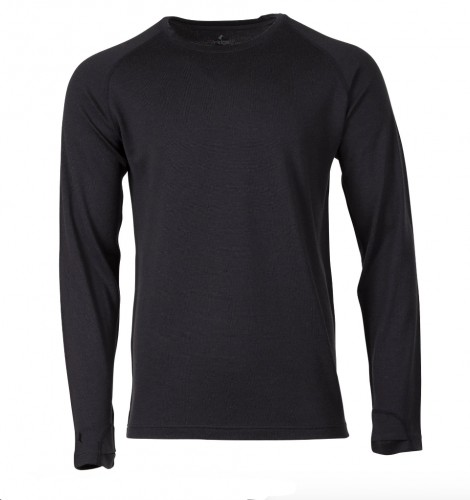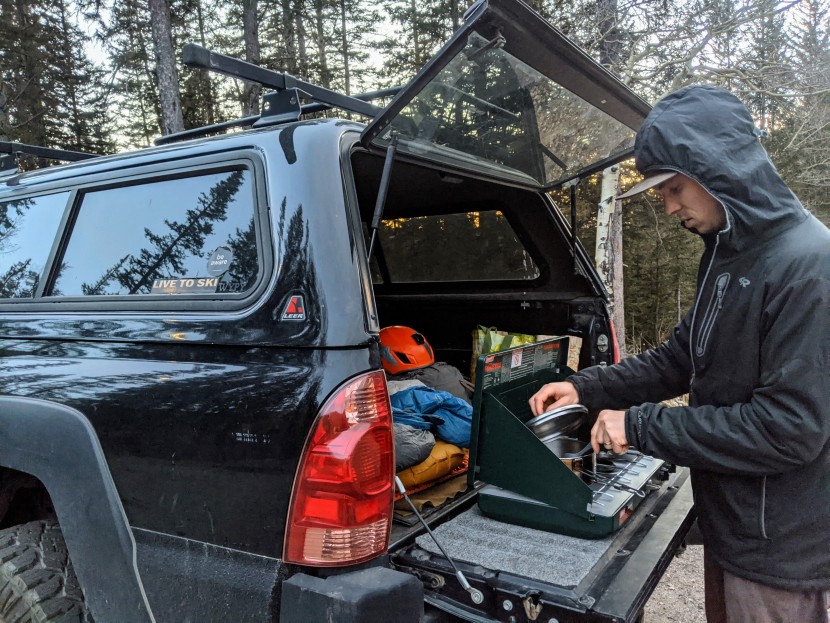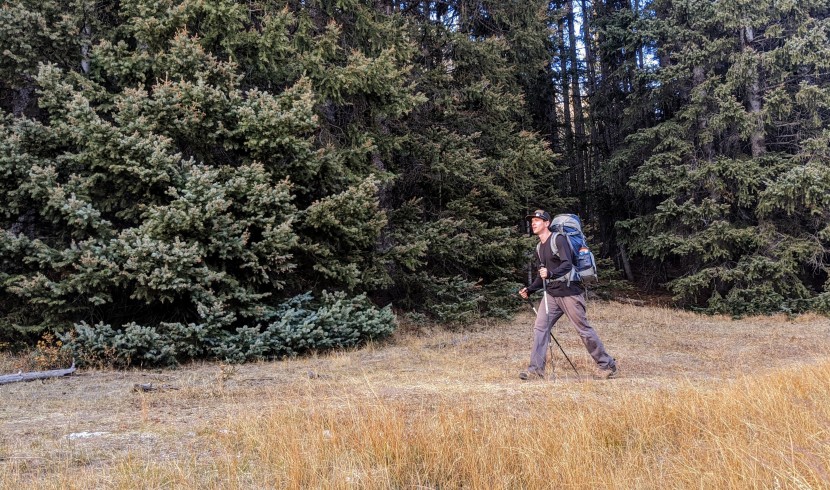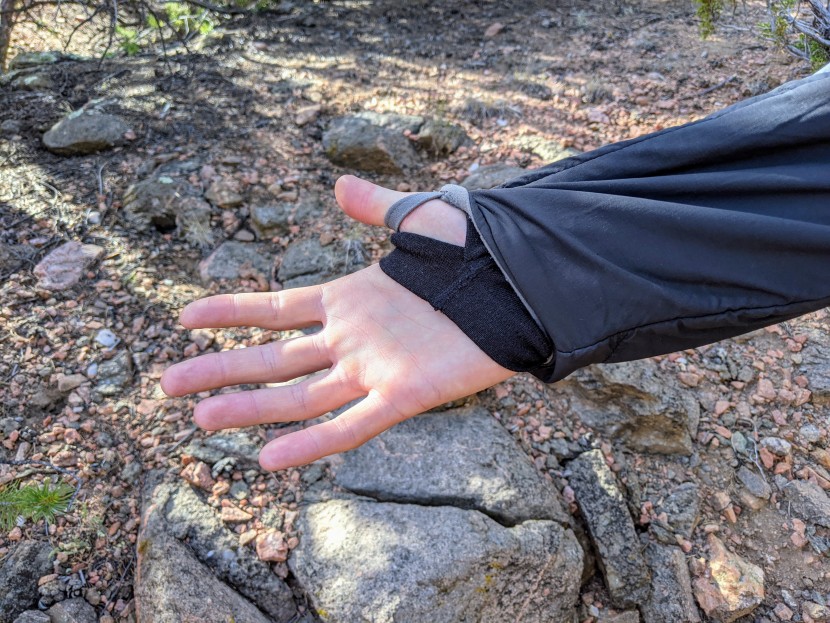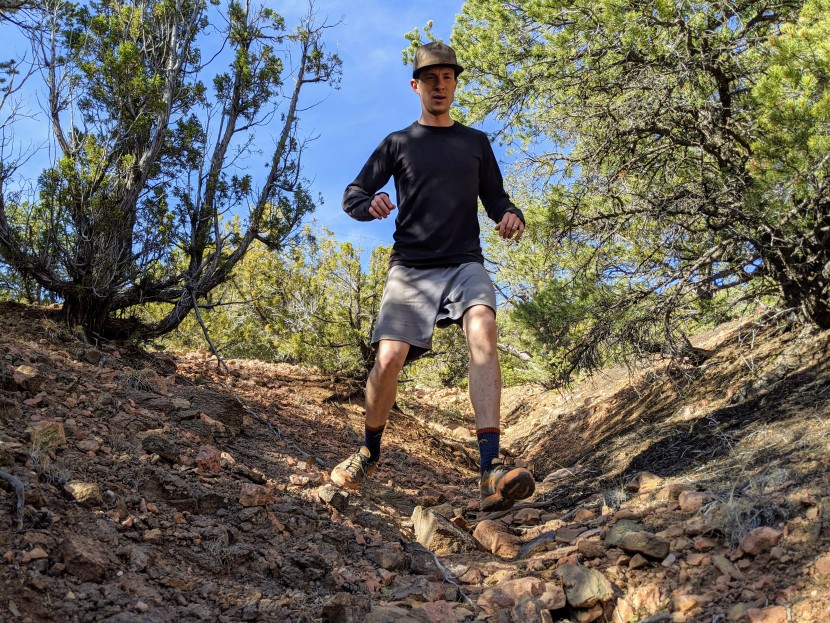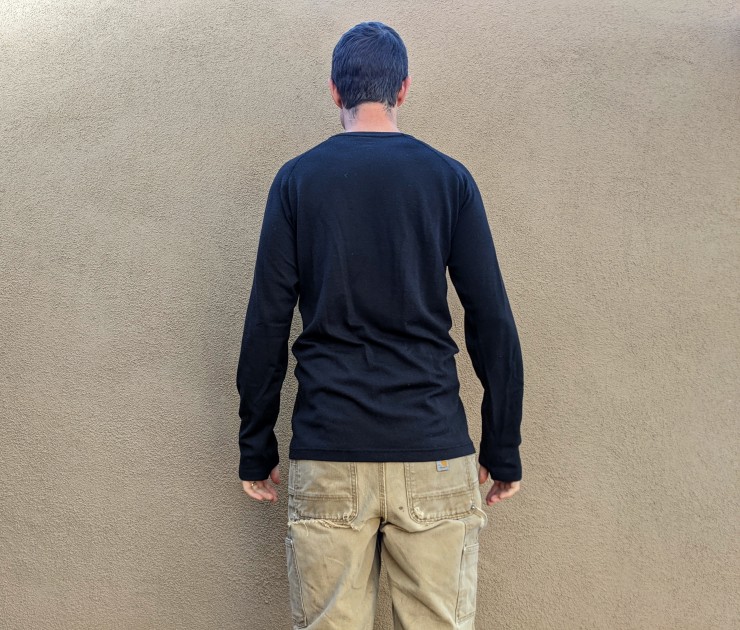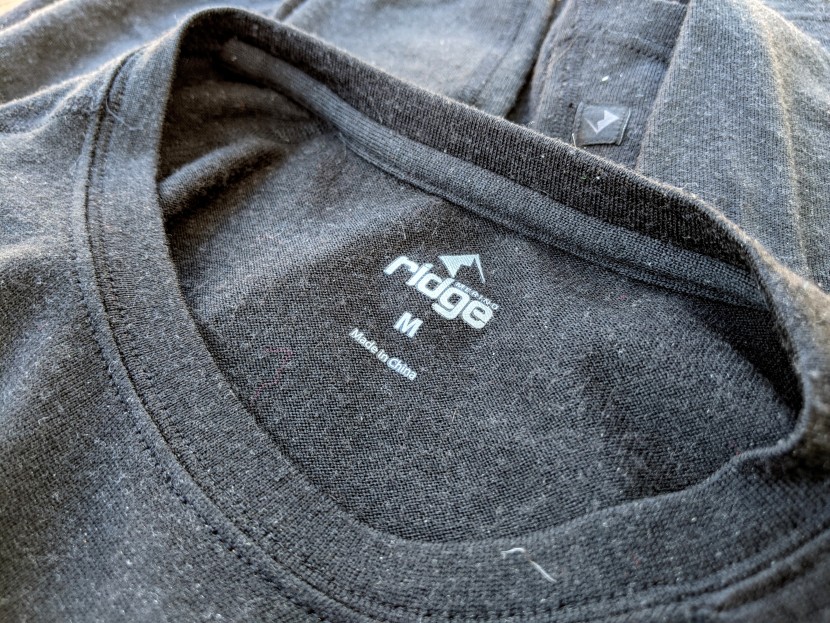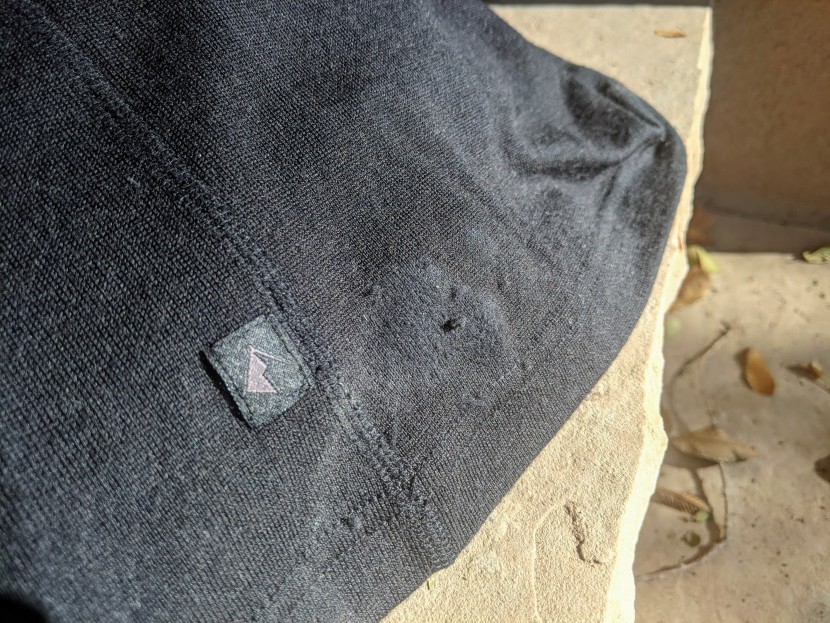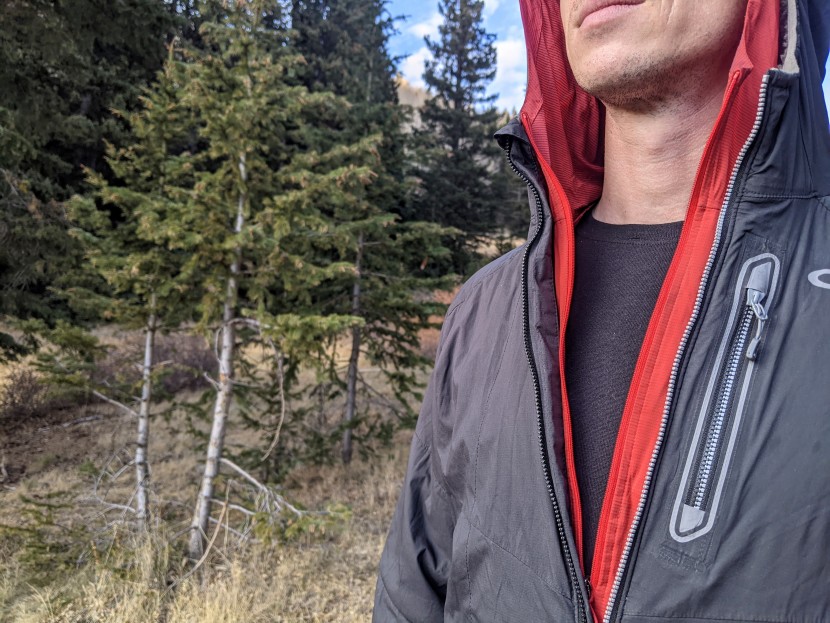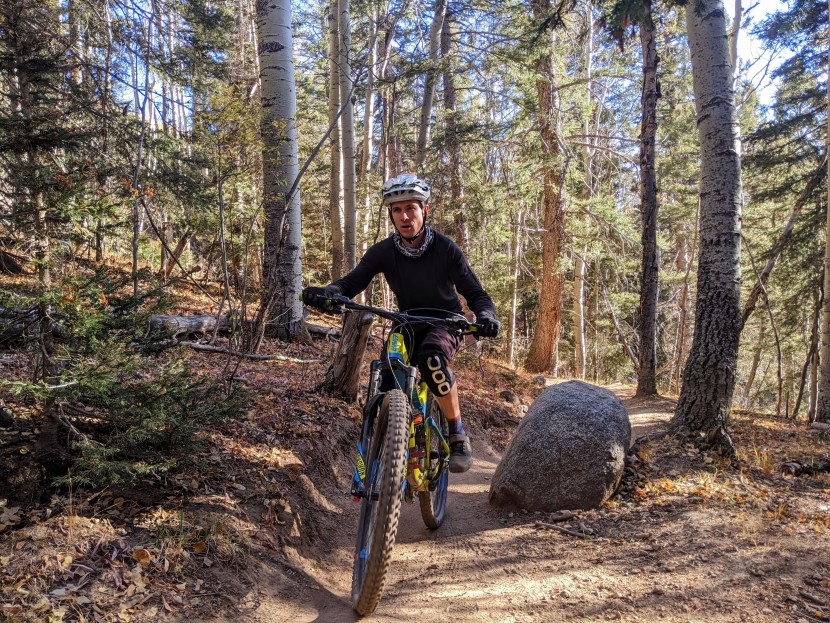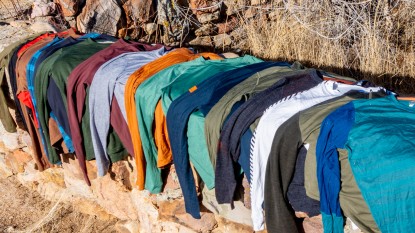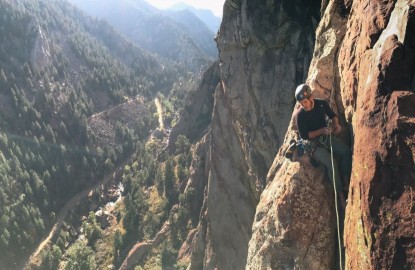Ridge Merino Inversion Crew Review
Our Verdict
Our Analysis and Test Results
Although we wouldn't quite qualify it as heavyweight top—despite advertising—the 270 g/m², 100% merino wool fabric of the Ridge Merino Inversion certainly adds a little oomph to warmth when compared directly to its competitors. This base layer is designed with winter sports in mind, incorporating thick thumb loops and an extra-long cut to ensure that your base layer doesn't become exposed to the harsh realities of an alpine winter.
Performance Comparison
Warmth
From skiing and snowboarding to expedition and ice climbing, the Inversion is a layer designed to optimize time spent out in the cold. Ridge defines it as a “heavyweight” base layer at a fabric weight of 270 g/m², which is only 20 g/m² more than most of the merino tops we tested. We would qualify it as a beefed-up midweight layer. We noticed a difference in warmth when the temperature dropped, and this base layer managed to keep us comfortably warm in our sleeping bags even as the thermometer sank well-below freezing.
More importantly than fabric density, this top incorporates design specifics to help it stay in place during cold-weather activity. An extra-long cut of the hem allows one to tuck it in easier, and plush thumb loops keep snow out of your sleeves. We particularly appreciated that the thumb loops are designed with accompanying garages, so they partially tuck-away when not being used.
Breathability
The Inversion top is spun from ultra-fine, 100% merino wool and enjoys all of the benefits of this all-natural super-fiber. Efficient thermoregulation is driven by wool's ability to effectively wick up and disperse moisture to the outside of the fabric for evaporation. The slightly thicker cut of the fabric on this top does seem to slow this process slightly, but certainly not in the way that it would be obvious while working hard on the skin track. One unique and thoughtful design point is the thick sweatband around the back of the collar, which does help catch sweat when working particularly hard. But it really comes down to personal preference — is a slight decrease in breathability a tradeoff you are willing to make for an extra boost in warmth?
Comfort and Fit
The thick cut of the Inversion makes it extra plush. This is the type of layer you will love to wear all day up on the mountain, to bed as pajamas, and then back out onto the mountain to start the process all over again. Dirtbags, rejoice! Fortunately, Merino wool's natural antimicrobial properties make this more of a reasonable reality — even after a full day of alpine climbing, we had no issues with stench when we curled back up into our sleeping bag at night.
The Inversion is purposefully cut long to make it easier to tuck in, and although it is a slim fit, this allows for a little extra room for girth. Similarly, the arms are cut a bit longer than most so that you can comfortably tuck into the thumb loops without stretching out the naturally elastic wool. Our head tester is 5'10", 155lb, with a slender mountaineer's frame, and fits perfectly in a size Medium. If you fall between sizes on the larger side of the spectrum—for example, a medium is a tad too small, but a large much too big—we suggest sticking with your normal sizing based on the extra-long cut.
Drying Speed
It may come as little surprise that the extra-hefty Inversion took the longest to dry out of any of the midweight Merino tops we tested. But it did take an extra-long time, so for those planning to pack this as one of your few layers on an extended backpacking or expedition trip, make sure you give yourself much more than an hour to wash and sun-dry. Fortunately, this same slow drying speed didn't directly translate to high-intensity activities. We had no issues with the fabric soaking through with sweat when worn next to skin—the Merino wool worked precisely as it should.
Durability
Please don't let our hesitance surrounding durability turn you away from an otherwise great base layer top. But when directly compared to others in a similar weight class, our abrasion test revealed some serious pilling and a slight discoloration of face fabric unique to the Inversion. Nothing to be seriously worried about, but it does raise an eyebrow and is certainly something to watch out for if you plan on taking this top along on a desert crack-climbing trip.
Our main concern is that while most of the construction is backed by more durable flatlock seams, for some reason, the hem and main cuff are simple flat seams that can be more prone to unraveling through wear and tear. Fortunately, Ridge backs up all of their products with an 100% satisfaction guarantee that protects against, “manufacturing and material defects for their lifetime [of the product].” That said, they also claim that normal wear and tear does not qualify as under warranty.
Layering Ability
One good thing about thick base layers, you don't have to excessively layer them when the temperatures drop. We loved the fact that we could wear the Inversion confidently under a lightweight shell (like a windbreaker), through a range of temperatures, and only have to reach for a light puffy when alpine temperatures dropped at night. Like other, thicker layers we tested, this top also doubles well as a less bulky mid-layer, making it an extra-versatile addition to your winter wardrobe.
Value
Unfortunately, the Inversion does not entirely escape the stereotype of expensive, 100% Merino wool base layers. While you can expect to pay for top-quality features, they may also be more than worth the extra cost, particularly if you are in the market specifically for a go-to base layer for a slew of winter adventures just off the horizon. And while this top isn't cheap, it's one of the least expensive merino wool tops in our line-up.
Conclusion
We love the plush, cozy, and athletically-inclined performance of the Ridge Merino Inversion. For those particularly susceptible to chilly core temperatures, the extra heft of this base layer may be just what the doctor ordered for staying warm, comfortable, and dry this winter.


